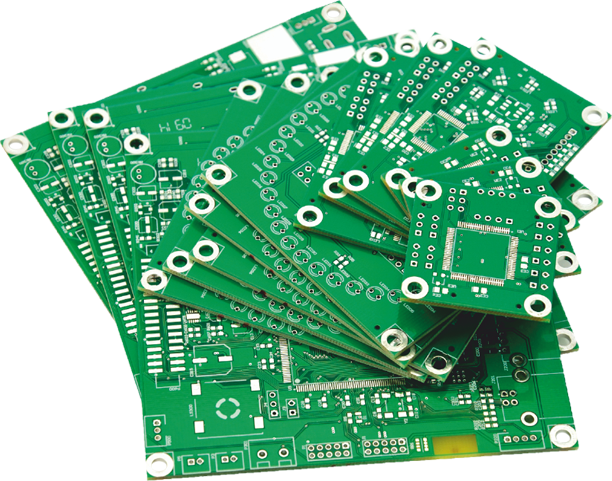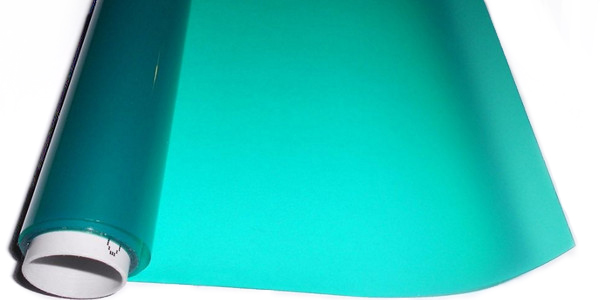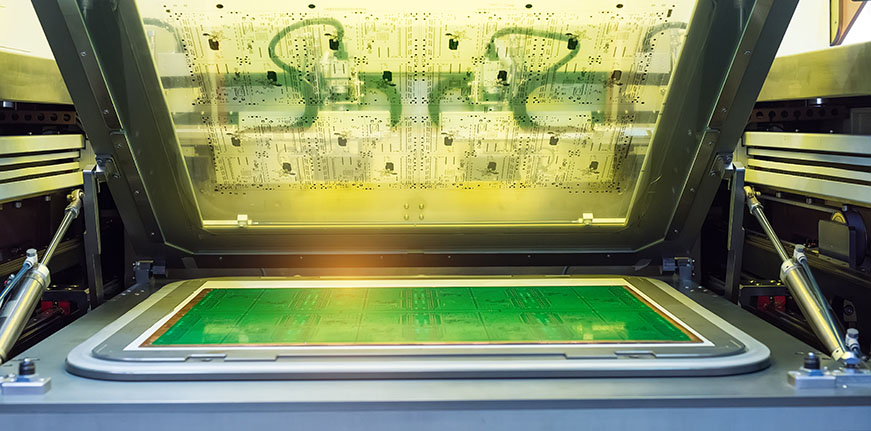When it comes to choosing the right solder mask for your PCB project, the decision between Dry Film Solder Mask and Liquid Photoimageable (LPI) Solder Mask can significantly impact the quality, cost, and performance of your board. Both options have unique benefits and drawbacks, but which one is best for your specific needs? In short, Dry Film Solder Mask is often preferred for high-precision projects requiring uniform thickness, while LPI Solder Mask is a cost-effective choice for standard applications with faster production times. In this comprehensive guide, we’ll dive deep into the differences, advantages, and cost comparisons of these two popular solder mask types to help you make an informed decision for your next PCB design.
What is a Solder Mask and Why Does It Matter?
A solder mask is a protective layer applied to a printed circuit board (PCB) to prevent solder from bridging between conductive traces and to shield copper from oxidation. It also enhances the durability of the board by protecting it from environmental factors like moisture and dust. Without a proper solder mask, your PCB risks short circuits, corrosion, and reduced lifespan.
Choosing the right solder mask type is critical because it affects not only the board’s performance but also the manufacturing process and overall cost. The two most common types are Dry Film Solder Mask and Liquid Photoimageable (LPI) Solder Mask. Let’s break down what each of these entails and how they compare for various PCB projects.

Understanding Dry Film Solder Mask
Dry Film Solder Mask is a photosensitive polymer film that comes in a solid sheet form, sandwiched between two protective layers. During the PCB manufacturing process, this film is vacuum-laminated onto the board, exposed to UV light through a patterned mask, and then developed to create openings for soldering pads. Finally, it undergoes a thermal curing process to harden the mask.
This type of solder mask is known for its precision and uniform thickness, making it ideal for high-density designs where fine-pitch components are used. It’s commonly applied in industries requiring strict quality control, such as aerospace and medical electronics.

Dry Film Solder Mask Advantages
- Uniform Thickness: Dry Film provides a consistent layer thickness (typically 0.8 to 1.2 mils or 20-30 microns), which is crucial for high-frequency designs where impedance control is vital. For example, in RF applications operating at 2.4 GHz, uniform solder mask thickness helps maintain signal integrity by minimizing variations in dielectric properties.
- High Precision: It offers excellent resolution for fine-pitch components, supporting trace widths and spacing as small as 3 mils (0.075 mm). This makes it suitable for complex, densely packed PCB layouts.
- Durability: The vacuum lamination process ensures strong adhesion to the PCB surface, reducing the risk of peeling or cracking during thermal cycling or harsh environmental conditions.
- Better for High-Volume Production: Once set up, the process can be highly repeatable, ensuring consistency across large batches of boards.
Dry Film Solder Mask Disadvantages
- Higher Cost: The materials and equipment required for vacuum lamination and precise exposure make Dry Film more expensive, often costing 20-30% more per square foot compared to other methods.
- Longer Processing Time: The multi-step process, including lamination and development, can add 1-2 hours per batch to production timelines, which may delay projects with tight schedules.
- Limited Flexibility: It’s less adaptable for irregular board shapes or designs requiring frequent changes, as the film must be cut and applied precisely.
Understanding Liquid Photoimageable (LPI) Solder Mask
Liquid Photoimageable (LPI) Solder Mask is a liquid ink applied to the PCB surface through methods like silkscreening or spraying. After application, it’s exposed to UV light through a patterned mask to define solderable areas, developed to remove unexposed portions, and then cured thermally or with UV light to harden the mask.
LPI is the most widely used solder mask type in the industry due to its versatility and cost-effectiveness. It’s suitable for a broad range of applications, from consumer electronics to industrial equipment.

LPI Solder Mask Advantages
- Cost-Effective: LPI materials and application methods are generally less expensive, with costs often 20-30% lower per square foot than Dry Film. This makes it a popular choice for budget-conscious projects or high-volume consumer electronics.
- Faster Application: The process of spraying or silkscreening LPI is quicker, often taking less than 30 minutes per batch, which can speed up production timelines.
- Versatility: LPI can be applied to irregular board shapes and sizes more easily, adapting to unique design requirements without the need for precise film cutting.
- Good for Prototyping: Its flexibility and lower cost make LPI ideal for small runs or prototype boards where design changes are frequent.
LPI Solder Mask Disadvantages
- Inconsistent Thickness: LPI thickness can vary between 0.5 to 1.5 mils (12-38 microns) depending on the application method, which may affect impedance control in high-frequency designs. For instance, at frequencies above 1 GHz, this variation could lead to signal loss or crosstalk.
- Lower Precision: It’s less suited for ultra-fine-pitch components, with resolution limitations around 4-5 mils (0.1-0.125 mm), potentially causing issues in densely packed designs.
- Durability Concerns: LPI may be more prone to cracking or peeling under extreme thermal stress or during multiple reflow cycles, especially if not cured properly.
Image Suggestion: Place an image here depicting the LPI Solder Mask application, showing a PCB being sprayed with liquid mask. ALT Text: "Liquid Photoimageable (LPI) Solder Mask being sprayed onto a PCB."
Dry Film Solder Mask vs. LPI Solder Mask: Key Differences
To help you decide which solder mask is best for your PCB project, let’s compare Dry Film and LPI across several critical factors:
| Criteria | Dry Film Solder Mask | LPI Solder Mask |
|---|---|---|
| Application Method | Vacuum lamination of solid film | Spraying or silkscreening liquid ink |
| Thickness Uniformity | High (0.8-1.2 mils) | Variable (0.5-1.5 mils) |
| Precision for Fine-Pitch | Excellent (down to 3 mils) | Moderate (down to 4-5 mils) |
| Processing Time | Longer (1-2 hours per batch) | Faster (under 30 minutes per batch) |
| Cost | Higher (20-30% more per sq. ft.) | Lower (20-30% less per sq. ft.) |
| Best for | High-density, high-frequency designs | Standard designs, prototypes |
This table highlights that Dry Film excels in precision and uniformity, while LPI offers speed and cost savings. Your choice will depend on the specific requirements of your project, such as design complexity and budget constraints.
Dry Film Solder Mask Cost Comparison
The cost of applying Dry Film Solder Mask is generally higher due to the specialized materials and equipment needed. For a standard 12x12 inch PCB panel, the cost of Dry Film application can range from $1.50 to $2.00 per square foot, depending on volume and complexity. This is roughly 20-30% more expensive than other methods. Additional costs may arise from the need for precise alignment tools and longer processing times, which can increase labor expenses by 10-15% compared to simpler methods.
For high-volume production runs, the initial setup cost for Dry Film (including custom film preparation) can be amortized over thousands of units, slightly reducing the per-unit cost. However, for small runs or prototypes, this higher upfront investment may not be justifiable.
LPI Solder Mask Cost Comparison
LPI Solder Mask is typically more budget-friendly, with application costs ranging from $1.00 to $1.50 per square foot for a similar 12x12 inch PCB panel. This represents a 20-30% savings compared to Dry Film. The lower material cost, combined with faster application methods like spraying, reduces labor expenses, making LPI a go-to option for cost-sensitive projects.
For small-batch or prototype PCBs, LPI’s lower setup costs and flexibility make it even more attractive. However, in high-frequency or high-reliability applications, the potential need for rework due to thickness inconsistencies could offset some of these savings, adding 5-10% to the overall project cost in worst-case scenarios.
Which Solder Mask Should You Choose for Your PCB Project?
Selecting between Dry Film and LPI Solder Mask depends on the specific needs of your PCB project. Here are some scenarios to guide your decision:
- High-Density or High-Frequency Designs: If your project involves fine-pitch components (below 4 mils spacing) or operates at frequencies above 1 GHz, Dry Film is the better choice due to its uniform thickness and precision. This is critical for applications like 5G communication boards or high-speed digital circuits where signal integrity is paramount.
- Cost-Sensitive or Standard Designs: For consumer electronics or less complex designs where budget is a concern, LPI offers a practical solution with adequate performance. It’s ideal for projects like simple IoT devices or LED lighting boards.
- Prototyping or Small Runs: If you’re in the early stages of development and expect frequent design iterations, LPI’s lower cost and faster processing make it more suitable.
- Harsh Environments: For PCBs exposed to extreme temperatures or humidity (e.g., automotive or industrial applications), Dry Film’s superior adhesion and durability may justify the higher cost to ensure long-term reliability.
Ultimately, weigh the trade-offs between cost, performance, and production timeline. If precision and reliability are non-negotiable, invest in Dry Film. If speed and savings are priorities, LPI is likely the way to go.
Additional Considerations for Solder Mask Selection
Beyond the core differences, a few other factors can influence your choice of solder mask:
- Environmental Compliance: Both Dry Film and LPI masks are available in formulations that comply with RoHS and other environmental standards. Ensure the chosen material meets your regulatory requirements.
- Color Options: While green is the standard color for solder masks, both types are available in colors like blue, red, and black. Color choice may affect cost slightly (non-green options can add $0.10-$0.20 per square foot) but is often chosen for branding or aesthetic reasons.
- Thermal and Chemical Resistance: Dry Film generally offers better resistance to thermal shock and chemical exposure, which is vital for boards undergoing multiple reflow cycles or harsh cleaning processes.
How We Can Help with Your PCB Solder Mask Needs
At ALLPCB, we understand that every PCB project has unique requirements. Whether you’re leaning toward Dry Film Solder Mask for its precision or LPI Solder Mask for its cost-effectiveness, our team is ready to support you with high-quality manufacturing solutions. We offer both solder mask types with customizable options to fit your design specifications, ensuring optimal performance and reliability for your boards.
Our state-of-the-art facilities and experienced engineers can guide you through the selection process, providing insights tailored to your application. From prototype to mass production, we’re committed to delivering PCBs that meet your exact needs on time and within budget.
Conclusion
Deciding between Dry Film Solder Mask and Liquid Photoimageable (LPI) Solder Mask for your PCB project comes down to balancing performance, cost, and production needs. Dry Film stands out with its precision and uniform thickness, making it ideal for high-density and high-frequency applications, though it comes at a higher cost and longer processing time. On the other hand, LPI offers affordability and speed, perfect for standard designs and prototypes, but may lack the consistency needed for advanced projects.
By understanding the advantages and cost comparisons of each—Dry Film’s superior durability versus LPI’s budget-friendly application—you can make a choice that aligns with your project goals. At ALLPCB, we’re here to help you navigate these decisions and deliver top-notch PCB solutions tailored to your specifications. Whether you prioritize precision or price, we’ve got the expertise to bring your design to life.
 ALLPCB
ALLPCB







